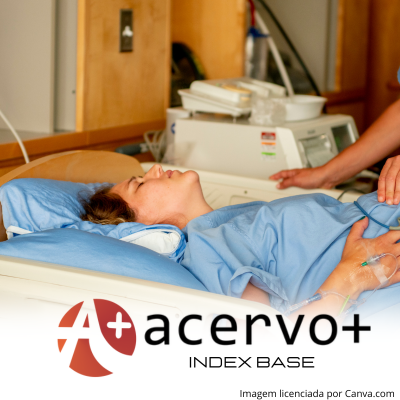Manejo da hemorragia pós-parto: diagnóstico precoce, intervenções e estratégias de prevenção em terapia intensiva obstétrica
##plugins.themes.bootstrap3.article.main##
Resumo
Objetivo: Fornecer uma visão abrangente sobre as estratégias de manejo da Hemorragia Pós-Parto (HPP) em terapia intensiva, abordando o diagnóstico e as intervenções farmacológicas e não cirúrgicas. Revisão de literatura: A HPP é definida como a perda excessiva de sangue após o parto, sendo responsável por 25% das mortes maternas no mundo. Apesar dos avanços na assistência obstétrica, a HPP continua sendo uma emergência que requer identificação e intervenção rápidas para evitar complicações graves. A atonia uterina é a principal causa de HPP, sendo essencial o manejo ativo do terceiro estágio do parto para prevenção. Uterotônicos, como ocitocina e carbetocina, são eficazes, com o uso de ácido tranexâmico reduzindo a mortalidade materna em casos graves. Abordagens intervencionistas, como balões intrauterinos e tromboelastometria, complementam o tratamento, enquanto a reposição volêmica restritiva e o uso de cell saver são indicados em casos críticos. Considerações finais: São mandatórios o treinamento adequado e a implementação de protocolos padronizados para o manejo da HPP em terapia intensiva obstétrica. Há a necessidade de aprimorar as práticas assistenciais, considerando o aumento da demanda por cuidados críticos obstétricos. A conexão das habilidades de diferentes especialidades médicas é essencial para melhorar os resultados maternos no contexto de HPP.
##plugins.themes.bootstrap3.article.details##
Copyright © | Todos os direitos reservados.
A revista detém os direitos autorais exclusivos de publicação deste artigo nos termos da lei 9610/98.
Reprodução parcial
É livre o uso de partes do texto, figuras e questionário do artigo, sendo obrigatória a citação dos autores e revista.
Reprodução total
É expressamente proibida, devendo ser autorizada pela revista.
Referências
2. BIENSTOCK JL, et al. Postpartum Hemorrhage. N Engl J Med. 2021; 384(17): 1635–45.
3. COSTA SDAL, et al. Mortalidade Materna por Hemorragia no Brasil / Maternal Mortality from Hemorrhage in Brazil. BJHR. 2021; 4(2): 4333–42.
4. EDWARDS Z, et al. Is training in obstetric critical care adequate? An international comparison. International Journal of Obstetric Anesthesia. 2019; 37: 96–105.
5. EVENSEN A, et al. Postpartum Hemorrhage: Prevention and Treatment. Am Fam Physician. 2017; 95(7): 442–9.
6. FERREIRA I, REYNOLDS A. O Papel da Ocitocina na Profilaxia da Hemorragia Pós-Parto em Locais com Recursos Limitados. Acta Med Port. 2021; 34(12): 857–63.
7. FREITAS S, et al. Hemorragia pós-parto: características, tratamento e prevenção. Braz J Surg Clin Res. 2022; 37(3): 20–5.
8. GALLOS I, et al. Randomized Trial of Early Detection and Treatment of Postpartum Hemorrhage. N Engl J Med. 2023; 389(1): 11–21.
9. GALLOS I, et al. Uterotonic drugs to prevent postpartum haemorrhage: a network meta-analysis. Health Technol Assess. 2019; 23(9): 1–356.
10. GHOSH, Rakesh et al. Heat stable carbetocin or oxytocin for prevention of postpartum hemorrhage among women at risk: A secondary analysis of the CHAMPION trial. International Journal of Gynecology & Obstetrics, 2024; 164(1): 124-130.
11. GRIFFIN KM, et al. Obstetric Disorders and Critical Illness. Clinics in Chest Medicine. 2022; 43(3): 471–88.
12. HENRIQUE M, et al. Balões de tamponamento intrauterino na hemorragia pós-parto – Atualizações. Femina. 2022; 50(12): 711–7.
13. HOFER S, et al. Haemostatic support in postpartum haemorrhage: A review of the literature and expert opinion. European Journal of Anaesthesiology. 2022.
14. JONES AJ, et al. Preventing postpartum hemorrhage with combined therapy rather than oxytocin alone. American Journal of Obstetrics & Gynecology. 2023; 5(2): 100731.
15. KASERER A, et al. Patient Blood Management in Pregnancy. Transfus Med Hemother. 2023; 50(3): 245–55.
16. LANZA AV, et al. Factors associated with severe maternal outcome in patients admitted to an intensive care unit in northeastern Brazil with postpartum hemorrhage: a retrospective cohort study. BMC Pregnancy Childbirth. 2023; 23(1): 573.
17. MESQUITA M, et al. The placental bed in placental abruption. Hypertens Pregnancy. 2006; 25: 106.
18. ORGANIZAÇÃO MUNDIAL DA SAÚDE. WHO recommendations for the prevention and treatment of postpartum haemorrhage. 2012. Disponível em: https ://iris.who.int/bitstream/handle/10665/75411/9789241548502_eng.pdf?sequence=1. Acessado em: 07 de dezembro de 2024.
19. PARRY SMITH WR, et al. Uterotonic agents for first-line treatment of postpartum haemorrhage: a network meta-analysis. Cochrane Database of Systematic Reviews. 2020; 11.
20. SHAKUR, Haleema et al. Effect of early tranexamic acid administration on mortality, hysterectomy, and other morbidities in women with post-partum haemorrhage (WOMAN): an international, randomised, double-blind, placebo-controlled trial. The Lancet, 2017; 389(10084): 2105-2116.
21. ZAMPARINI J, BHOORA S. Evolving paradigms in obstetric critical care: A global perspective. Obstet Med. 2024; 17(2): 69–70.

